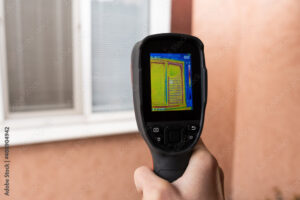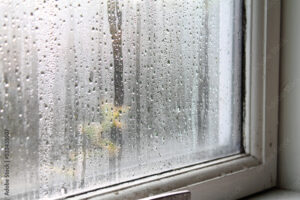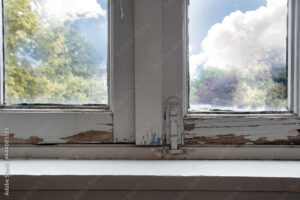
Inspecting Your Windows: A Comprehensive Guide for Homeowners and DIY Enthusiasts
Windows, the eyes of a house, not only illuminate our living spaces with natural light but also offer a glimpse into the soul of a home’s condition. It’s easy for these important features to be overlooked in the day-to-day hustle, but with a little attention and know-how, they can save homeowners from a host of potential woes. Whether you’re a DIY enthusiast tackling your first home project or a seasoned real estate professional screening a property for potential issues, the simple act of inspecting your windows can reveal much about the state of your home. In this detailed guide, we’re going to take a closer look at why window inspection is crucial, how to perform a thorough evaluation, and what common issues to keep an eye out for. By the end of this post, you’ll have the knowledge to keep your windows in top shape or make informed decisions when buying or selling a home.
The Importance of Window Inspection
Windows play a critical role in the comfort, aesthetics, and efficiency of your home. They protect against the elements, help maintain a comfortable interior climate, and provide security. Regular inspection of your windows can lead to early detection of problems, improving the longevity of your home’s framework, and potentially your energy bill.
Why Caring for Your Windows Matters
Energy Efficiency
Old, drafty windows can be a major source of energy loss. Properly functioning windows keep the cool air in during the summer and the warm air in during the winter, which can lead to significant savings on your energy bills.
Home Security
Windows, when properly installed and maintained, add an extra layer of security to your home. Damaged or malfunctioning windows can be an open invitation to intruders. Regular inspections can help ensure your home is as secure as possible.
Aesthetic Appeal
Well-maintained windows play a crucial role in the curb appeal of your home. They contribute to the overall aesthetic and perceived value of the property. Stains and misalignments can blemish the visual harmony of a home’s exterior.
 How to Perform a Window Inspection
How to Perform a Window Inspection
Performing a window inspection is not a complicated process, but it does require attention to detail and a systematic approach. Here’s how to get started:
 Step 1: Gather Your Equipment
Step 1: Gather Your Equipment
Before you begin, it’s important to have the right tools on hand. These can include a flashlight, screwdriver, putty knife, and a pair of gloves. You might also need a step ladder if you’re inspecting windows that are out of reach.
Step 2: Examine the Window for Visual Signs
Start by checking for any visible signs of damage or wear. Look for cracked or broken glass, loose or missing putty, and chipped or flaking paint. This exterior examination can be done from the ground or from within your home.
Step 3: Test the Functionality of the Window
Open and close the window to see if it operates smoothly. If you have sliding windows, make sure they move along the track without resistance. Test the locking mechanism to ensure it engages and keeps the window securely closed.
Step 4: Evaluate the Window’s Insulation
Use your hand to feel for drafts around the window frame. In colder weather, this is easier to detect as you’re likely to feel a noticeable drop in temperature. If you notice drafts, it’s a sign that your window’s insulation is compromised.
Step 5: Inspect the Window’s Seals and Caulking
Look for any visible cracks in the caulk and along the window’s perimeter. These can allow water and air to seep into the home, potentially leading to mold, mildew, and wood rot.


 Step 6: Check for Condensation and Moisture
Step 6: Check for Condensation and Moisture
Condensation in between windowpanes could indicate a broken seal. This not only reduces energy efficiency but can also obscure your view. Also, check for any signs of mold or mildew on the window frames which could indicate a larger moisture problem.
Common Window Issues and Their Solutions
The telltale signs you’ve detected during your inspection can point to a variety of window issues. Here are common problems and their potential solutions:
 Drafty Windows
Drafty Windows
Drafts can often be attributed to poor insulation. If you feel air coming in, it may be time to reapply caulk or weather-stripping. For more severe cases, you may need to consider window replacement with energy-efficient models.
Stuck or Misaligned Windows
If you struggle to open or close your windows, they may be misaligned. This can be due to a settlement of the home or the window frame. In cases where adjustments are not possible, it might be necessary to re-frame the window.
 Broken Seals and Moisture Damage
Broken Seals and Moisture Damage
Broken seals, often identified by condensation inside the windowpanes, can be repaired by replacing the glass or the entire window. This is a job best left to professionals.
 Rotted Window Frames
Rotted Window Frames
Wooden frames that have rot should be replaced to prevent further damage and maintain structural integrity. Identifying the source of moisture is crucial to prevent the rot from returning.
Damaged Hardware
Hardware that’s damaged or malfunctioning can compromise the security of your home. Replacing window locks and handles is typically an easy fix with the proper replacement parts.
Window Inspection for Home Sellers and Real Estate Professionals
If you’re in the process of selling a home, conducting a window inspection is imperative. It can help you identify issues that need to be resolved before putting the property on the market or used as negotiation points during a sale.
Preparing Your Home for Sale
Prospective buyers pay close attention to the condition of windows. Clean your windows thoroughly and conduct an inspection to ensure they’re in top shape. First impressions matter, and sparkling windows can improve the perceived value of your home.
Disclosing Window Issues
Transparency is key when it comes to selling real estate. Any window issues you’re aware of should be disclosed to potential buyers. This can help build trust and prevent any surprises down the road.
Negotiating Window Repairs
If a home inspection reveals window problems, buyers may request repairs as a condition of the sale. Being familiar with the state of your windows can help you negotiate a fair solution that satisfies both parties.
Conclusion
Windows, often taken for granted, are integral to our living spaces. Through the process of inspection, we can better understand their role in keeping our homes safe, comfortable, and energy efficient. Whether you’re maintaining your own home, undertaking a renovation, or preparing a property for sale, knowing how to inspect your windows puts you a step ahead in the care of your investment. Remember, prevention is always better than cure, and when it comes to windows, a stitch in time saves nine.
